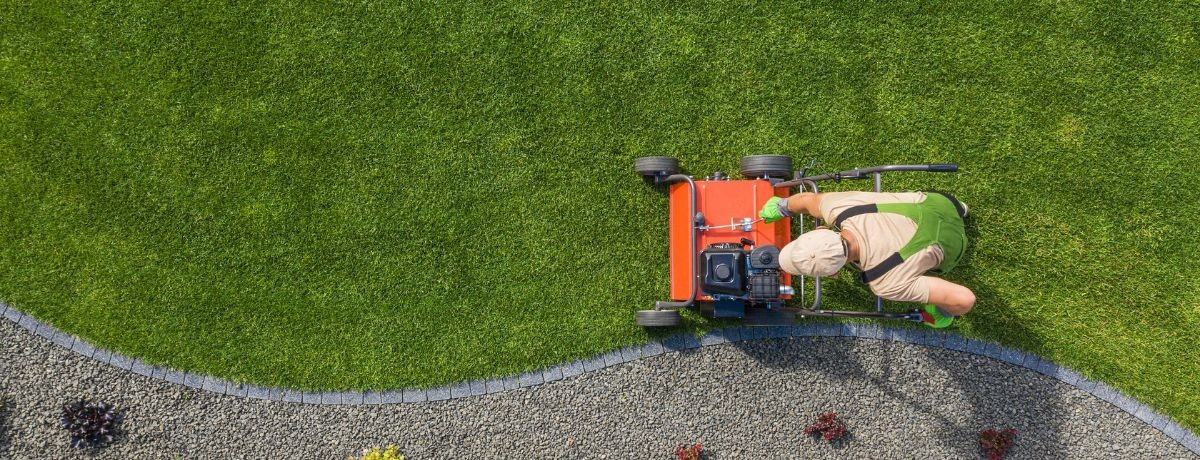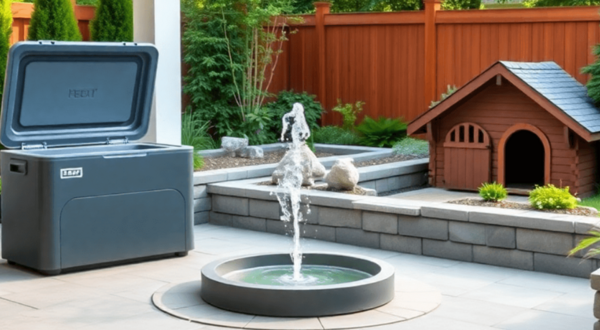
Lawn care is essential for homeowners across Canada, where diverse climates demand tailored approaches to maintain a vibrant and healthy yard. A well-maintained lawn not only enhances the aesthetic appeal of your property but also contributes significantly to the environment by improving air quality and reducing soil erosion.
This guide, The Ultimate Guide to Lawn Care: Tips and Tricks, will cover various aspects of lawn maintenance, including:
Maintaining a lush lawn provides numerous benefits:
With these insights, you can implement effective lawn care tips to achieve a stunning outdoor space year-round.
To assist in your lawn care journey, consider investing in some high-quality tools. For instance, a Worx 20V 5” Pruning Saw can make trimming branches a breeze. Meanwhile, a Worx 24" Electric Hedge Trimmer can help you achieve the flattest tops and cleanest sides on your hedges.
Don't forget about composting! With a Suncast Tumbling Composter, you can quickly and easily make compost in your backyard.
For cleaning up leaves or debris from your yard, a Worx 20V Cordless Li-ion Blower/Sweeper would be an excellent addition to your toolset. Lastly, consider using a Worx 40V Nitro Cordless Attachment 15" String Trimmer for precise edging and trimming tasks.
Selecting the right type of grass is crucial for a healthy lawn. In Canada, two primary categories of grasses are prevalent:
When choosing a grass type, consider the following tips:
Investing time in selecting the appropriate grass can lead to a lush, resilient lawn. Recognizing the differences between warm-season and cool-season grasses empowers homeowners to make informed decisions tailored to their local conditions.
Maintaining a vibrant lawn starts with understanding soil health. Soil testing is essential for determining the composition of your soil and ensuring optimal grass growth. Analyzing soil nutrients can help identify deficiencies and inform the necessary amendments to support a lush lawn.
Soil testing plays a crucial role in maintaining the health of your lawn. Here are three key reasons why it is important:
Conducting a soil test is relatively simple and can be done using the following steps:
Once you receive the results of your soil test, it's important to understand what they mean in order to make necessary improvements. Here's how to interpret the report:
By understanding your soil's unique composition, you can effectively tailor care practices that promote robust grass health and resilience.
Proper watering techniques are essential for maintaining a healthy lawn. Understanding the ideal schedule and amount of water can significantly influence grass growth and resilience.
Watering early in the morning offers several advantages:
Investing in effective tools can streamline your lawn watering process:
For more portable options, consider using a Worx 20V Power Share Hydroshot Portable Power Cleaner, which offers multiple pressure settings making it versatile for various cleaning tasks around your lawn.
Incorporating these methods into your lawn care routine creates an environment conducive to healthy grass growth. By utilizing efficient irrigation practices, you contribute not only to a lush appearance but also to sustainable outdoor living.
Additionally, using tools like the Suncast 225 Ft Hosemobile Hose Reel Cart can help manage your hose storage efficiently while keeping your garden organized.
Understanding the intricacies of mowing techniques complements these watering practices, further enhancing lawn health and aesthetics. Adjusting mowing height appropriately contributes significantly to creating a lush landscape while promoting robust grass development.
Aeration plays a crucial role in maintaining a healthy lawn. It helps alleviate soil compaction, allowing air, water, and nutrients to penetrate deep into the root zone. This process fosters robust grass growth and enhances nutrient absorption.
Thatch accumulation can hinder grass health. Look for these indicators:
Incorporating effective mowing techniques enhances lawn vitality. Adjusting mowing height according to seasonal needs supports healthy growth patterns. The one-third rule for mowing suggests cutting no more than one-third of the grass height at each session, promoting resilience.
For instance, using a self-propelled lawn mower like the Worx Nitro can make this task easier. Additionally, integrating irrigation practices and proper mowing frequency maximizes your lawn's potential while ensuring optimal nutrient absorption through aeration and dethatching practices.
It's also important to manage your garden hose effectively during these processes. A Suncast 175 ft Slide Trak hose hideaway could be a great addition to your gardening tools, making it easier to store and manage hoses without the hassle of tangling.
Lastly, maintaining the edges of your lawn is equally important. A cordless grass trimmer/edger like the Worx model can help achieve clean edges while saving you the trouble of managing separate tools for trimming and edging.
Maintaining a vibrant lawn in Canada requires an understanding of fertilization strategies tailored to local conditions. Choosing the right type of fertilizer is crucial. Two primary categories exist:
Timing your fertilization aligns with grass type and seasonal growth patterns. For cool-season grasses, apply fertilizers in early spring and fall when growth peaks. Warm-season grasses benefit from fertilization in late spring and summer.
Proper fertilizer application techniques can significantly impact effectiveness:
Integrating these practices will ensure your lawn receives essential nutrients, promoting healthy growth throughout the seasons.
Effective weed control is essential for maintaining a healthy lawn. Canadian lawns often face a variety of common weeds, including:
Understanding the different types of herbicide applications is crucial for effective weed management:
In addition to chemical methods, consider natural solutions for weed management. Simple household ingredients can provide eco-friendly alternatives:
By employing these strategies, homeowners can ensure their lawns remain lush and free from invasive weeds.
Maintaining a healthy lawn involves effective pest management to prevent infestations that can compromise grass health. Common lawn pests in Canada include:
To mitigate pest problems, consider adopting cultural practices:
When cultural methods fall short, chemical treatment options may be necessary. Select pesticides that target specific pests without harming beneficial insects. It is essential to follow application guidelines carefully to ensure safety and efficacy.
Utilizing a combination of these pest control strategies will contribute to a flourishing lawn. Be proactive in monitoring for signs of pests and implementing measures promptly for the best results.
Effective seasonal lawn care is crucial for maintaining a lush and vibrant lawn throughout the year. Each season presents unique challenges and opportunities. Here are specific care strategies for each season:
Adjust practices based on local weather conditions. For instance, if you're in Oklahoma, you can find helpful insights in this lawn management guide. Understanding your environment ensures that you implement the best practices for lawn care throughout the year. This guide serves as a foundation for achieving optimal results in lawn maintenance. Additionally, consider investing in durable outdoor storage solutions like the Suncast 50 Gal Medium Deck Box, which can help protect gardening tools and other outdoor accessories from the elements during seasonal changes.
Choosing between lawn care services and DIY maintenance involves weighing several factors.
However, DIY maintenance comes with its own set of challenges:
When considering a lawn care company, assess the following:
For an extensive list of reputable lawn care companies, you might find this Forbes article helpful.
These factors contribute to making an informed decision that aligns with your lawn care needs. If you opt for DIY maintenance, consider investing in quality tools like the Worx Aerocart 8-in-1 Yard Cart for efficient gardening or the Worx 10" Cordless Chainsaw for backyard jobs. You can find these premium tools along with other lawn and garden essentials at Backyard Lifestyles, which offers superior products and dedicated customer service in Canada.
Implementing the practices discussed throughout The Ultimate Guide to Lawn Care: Tips and Tricks will significantly enhance your lawn's health and appearance. Consider these key takeaways:
Achieving a healthy yard requires commitment and the right knowledge. Embrace these tips for lawn care, and enjoy the benefits of a vibrant outdoor space that elevates your lifestyle.


